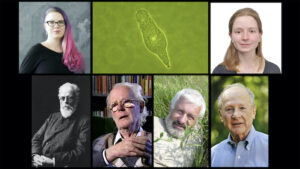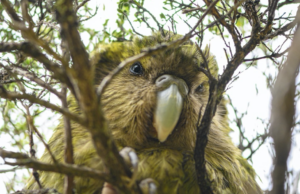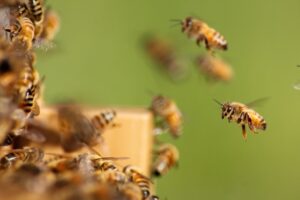Enter your address to receive notifications about new posts to your email.
Science & Publishing
-
Science & Publishing
A year in review with GENETICS Editor in Chief Howard Lipshitz
Howard Lipshitz reflects on his first year as Editor in Chief at GENETICS.
-
Science & Publishing
New GENETICS Associate Editors
GENETICS is pleased to announce five new Associate Editors have joined the Editorial Board. Cellular Genetics Mike Boxem Utrecht University Mike Boxem studies the polarization and organization of epithelial cells using C. elegans as an animal model. He received his training in genetics and developmental biology as a PhD student, working on the control of cell division…
-
Science & Publishing
An evolutionary scandal ends
Guest post by Charles H. Langley. Dic, hospes, doctis caelebs animalculum obisse hicque iacere physis legibus conveniens. (Stranger, tell the learned that the celibate little animal has passed away, and lies here, conforming to the laws of nature.) —John Rundin, with apologies to Simonides and Cicero Thirty-five years ago, in a celebrated News & Views…
-
Science & Publishing
Ctenophore genome assembly combed for evolutionary clues
Scientists generated a karyotype, chromosome-scale genome assembly, and manual genome annotation for a common ctenophore. Ctenophores—beautiful marine invertebrates also known as “comb jellies”—have long fascinated and perplexed biologists. Phylogeneticists believe that either ctenophores or sponges were the first organisms to branch off from the tree of life, making them the “sister clade” to all other…
-
Science & Publishing
As New Zealand’s endangered kākāpō rebounds, researchers measure genomic signs of inbreeding
Efforts to diversify an inbred population must take into account the genetic backgrounds of the founders. A female kākāpō named Rimu, whose parents are both Stewart Island founders.Photo by Jake Osborne. The nocturnal flightless parrot known as the kākāpō was once abundant throughout New Zealand. But after the introduction of mammalian predators, the species all…
-
Science & Publishing
Honey bee social behaviors and the long hunt for genetic factors
Researchers used a forward genetic approach to identify genes that affect a social behavior in honey bees. For more than 30 years, honey bee geneticist Robert E. Page, Jr. and his colleagues have sought the genes that influence a colony trait that only emerges from interactions between thousands of individual bees — a social phenotype.…
-
Science & Publishing
Mapping complex traits in hemp
Researchers identified dozens of quantitative trait loci controlling important traits in Cannabis sativa. In 2014, United States federal law changed to allow scientific research on Cannabis sativa in states with regulated hemp programs. This legal shift opened the door to research that had previously been slow and difficult due to regulatory hurdles and funding challenges. A new study published…
-
Science & Publishing
Naturally occurring small molecules correct mutant proteins in living cells
Yeast screens explore the therapeutic potential of chemical rescue. Anyone who’s worked in a lab knows that sinking feeling of discovering that the temperature of an incubator, carefully set the night before, has crept up high enough to ruin the experiment. While such a mishap usually spells disaster, occasionally, it can lead to an unexpected…
-
Science & Publishing
How an anti-fungal medication can stop new blood vessel formation
Discovery of thiabendazole target explains vascular disrupting action. Even after hundreds of millions of years of evolution, some yeast genes persist mostly intact in humans and other vertebrates. Despite the huge differences between yeast and humans, these genes perform the same molecular function in both organisms but have been adapted over time into new contexts.…
-
Science & Publishing
GENETICS welcomes new Associate Editor
We are pleased to announce the appointment of Laura Rusche as a new member of the GENETICS Editorial Board in the Gene Expression section. Laura Rusche Laura Rusche is an Associate Professor of Biological Sciences at the University at Buffalo (SUNY). She studies chromatin proteins in an evolutionary context. Rusche earned a BS in Molecular…
-
Science & Publishing
100 years since the medaka’s international debut: Aida’s legacy
From a Kyoto garden to scientific discoveries. Since the 17th century, medaka fish have been bred for their beautiful colors. Shortly after the 1900 re-discovery of Mendel’s laws of inheritance, medaka began to be used for genetic studies. Recessive inheritance of the orange-red (b) and white (r) variants, female-limited appearance of the white phenotype, and an…










